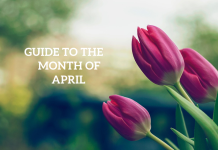I am not a professor of history or Black culture. I am not an expert on racism in America. I am a suburban mother concerned for our society and our future. Can you relate?
I will be honest, I naively knew racism existed in our country and thought that equality was a hopeful arm’s length away. However, I never really took the time to do my own research on the complexity of racism in our country…until now. Why now? Because of the George Floyd protests. Because the current pandemic has prioritized what is important to me. Because I am a mother and I want my children to learn about racism and strive to be anti-racist. Most importantly, because I want to learn and think for myself instead of listening to all the biased rhetoric I see on social media.
Through my own research, I have learned some surprising and inspiring pieces of racial history. Did you know that racism began thousands of years ago so those in power could remain in power by segregating and controlling people based on race? This thought process is still happening today in our political and legal systems. For example, it is legal for states to perform voting purges to remove voters from current registration lists. This makes sense if all the information is accurate but sometimes, it is not, and mostly minorities, are finding themselves surprisingly unable to vote on election day.
Did you know that racism can be so intrinsic that you may not even know that how you think or what you say could be racist, in turn making you racist? For example, I grew up in a tolerant family that did not judge others by the color of their skin. I do not remember my parents ever speaking negatively about other races or using racial slurs behind our closed home doors. However, when I was in third grade, I was annoyed with one of my friends and said that, “she only acts that way because she’s Black.” I did not realize that grouping my friend’s behavior into a “Black characteristic” was a racist intrinsic thought process. My Black teacher pulled me in the hall after the rumor mill got to her. I was always a good student and never in trouble. But, when I saw the hurt on her face as if I personally attacked her, I was shaking with fear that I would get in trouble for my comment. I learned that my comment was bad that day, but I did not realize how racist my comment was until later in life. Instead, looking back, I should have just admitted we were not getting along that day for whatever reason third graders do not see eye to eye.
Learning more about racism opened my eyes that being racist is more than the obvious spewing of racial slurs. Racism can be hidden in our legislative system, our own thought processes, homes and culture. Working towards becoming an anti-racist takes self-education, forgiveness, vulnerability within our own thoughts and most importantly, practice. Many experts believe we need to work to change our political and legislative systems to create more equity. A good place to start practicing anti-racism and create the necessary changes for equality is to look within ourselves and be honest with our own thought process on race. It’s not going to be easy for us, but I believe that once we change our mindsets to think of people as individuals, with all our differences, not as a race, we have a better chance of creating change in our society. For example, an individual can be mean, lazy, scary, a drug addict or a felon. An individual can also be nice, motivated, approachable and law abiding. These characteristics could describe someone with Black skin or White skin, but the important difference here is that we think of each person based on their own characteristics and differences not as a grouping of race.
 Based on what I have learned about anti-racism, some of the old phrases attempting to promote equality may not be enough now. For example, be kind to everyone, treat everyone the same, do not judge and do not see color. Being anti-racist is seeing color and our differences. Being anti-racist is judging, but judging based on individuals, not race. Being anti-racist is THINKING about how we can create an equal society and DOING something to change our legislation, legal process and systems that promote inequality. Being anti-racists takes deep thought and requires constant critique of our thoughts.
Based on what I have learned about anti-racism, some of the old phrases attempting to promote equality may not be enough now. For example, be kind to everyone, treat everyone the same, do not judge and do not see color. Being anti-racist is seeing color and our differences. Being anti-racist is judging, but judging based on individuals, not race. Being anti-racist is THINKING about how we can create an equal society and DOING something to change our legislation, legal process and systems that promote inequality. Being anti-racists takes deep thought and requires constant critique of our thoughts.
If you are not learning about racism and anti-racism currently, I challenge you to start reading, listening and thinking. Here are some starting resources I used to help me learn more about racism and anti-racism:
- How To Be An Antiracist, by Ibram X. Kendi, or any book as it relates to modern day racism.
- ACLU website: aclu.org
- Podcasts like RPCC on the air, specifically the podcast episode called: Colin Jackson’s Interaction with the Police.
















